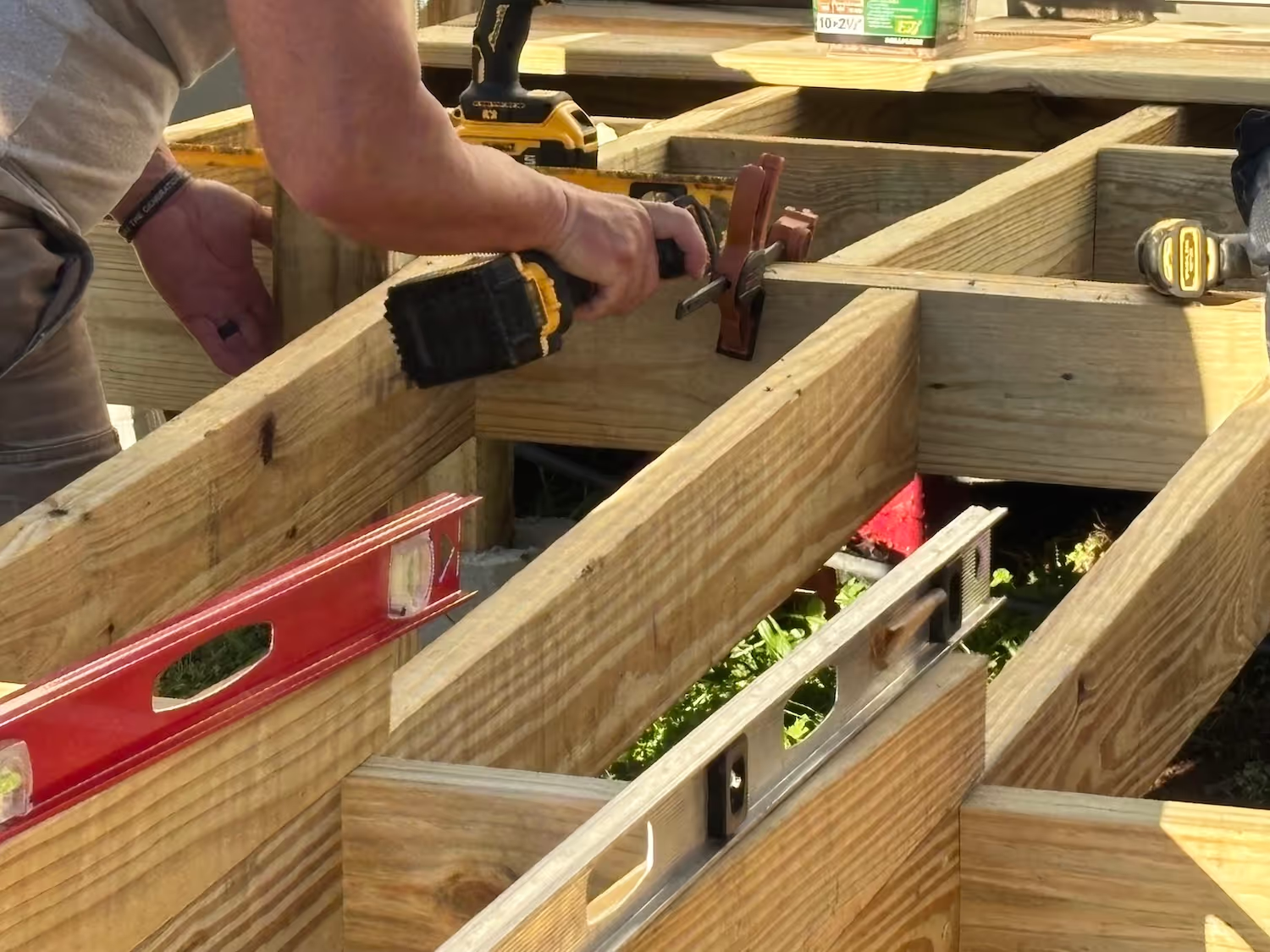Refer a Ramp for someone in need
We build ramps for low-income, disabled people who live in areas where we provide service. Referrals must come from a third-party health care provider, social worker, services organization, EMS, or other support agencies.
.jpeg)
Our Process
Learn about how our referral process for ramps works.
Referral Submission
We receive referrals from third-party health care providers for low-income older adults and individuals with disabilities in the Knoxville, Tennessee area.
A Plan is Made
A trained surveyor visits the home and designs a ramp at the preferred entry/exit that is appropriate in length, slope and direction. If the client approves the survey design, the ramp is scheduled for construction.
We Build The Ramp
A volunteer construction crew, led by a trained leader, will then build the new ramp at the home in as little as four to five hours.
Better Quality of Life
Our ramps allow patients in need the chance to experience a better quality of life and more freedom.
If you're interested in helping us continue our mission of accessibility for all, we appreciate support in all forms!
Ramp Referral Application
Referrals must come from a third-party health care provider, social worker, services organization, EMS, or other support agencies.
More Details
Got another question we haven't answered here? Take a look at our full list of FAQs.
Recipients of ramps must be low-income, have a disability, and live in a local area where the Volunteer Ramp Project provides services.
The Volunteer Ramp Project does not accept referrals directly from clients, families or friends.
Referrals must come from a third-party health care provider, social worker, services organization, EMS, or other support agencies, such as an Area Agency on Aging.
If you or a family member need a mobility ramp, please do not apply directly. Instead, reach out to your healthcare provider, social worker, or a community organization to submit a referral on your behalf.
1. The Referral Provider qualifies the client as being in financial and medical need.
2. The referral provider fills out the online referral form (located at the bottom of this page).
3. Once received and verified, priority is given to dialysis patients, patients who require frequent medical treatments, people living alone, and people with a dangerous existing ramp. If you feel your client needs priority and he/she does not fit any of these categories, you may explain in one of the free-form text boxes. A common example is an acute patient about to be discharged from a medical facility, such as a new amputee going home.
Please be aware that due to the high demand for ramps, it may take several weeks or months — or even longer — to have a ramp scheduled for construction.
We try as hard as we can to build as many ramps as we can for all of our referrals, but the Volunteer Ramp Project receives far more referrals than it has funds and volunteers available to pay for them and to build the ramps. That is why your financial donation or your willingness to volunteer to be a builder and/or a team leader in your area is critical to our mission!
Your new ramp is built with pressure-treated wood. This minimizes the potential problems of wood rot and termite damage.
You may decide to paint or stain the wood for appearance's sake. We recommend waiting three to six weeks so that the wood will be completely dry. We recommend that you sprinkle sand on the deck while the paint is still wet (or purchase paint with grit in it) to reduce the risk of the ramp being slippery.
The ramps are built exclusively by local volunteers. That means that the Volunteer Ramp Project can hold the cost of a ramp to about a third that of a retail contractor.
For an average of $1,000 to $2,000 in materials and a few hours of donated labor on a Saturday morning, the life of a homebound person can be completely transformed!
Ramps are funded by grants, donations, and fee-for-service reimbursements. The ramp is always free to the client. In some instances, clients like to donate toward the cost of their own ramp, or pay it forward for someone else to receive a ramp. We also encourage local fundraising to help underwrite the costs of lumber and hardware.
Make a Difference
Financial donations and volunteers are critical to our mission. With your support, we can help increase accessibility across Tennessee.

